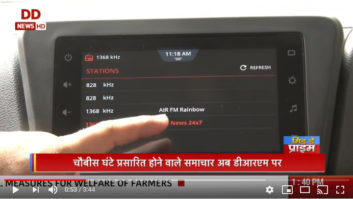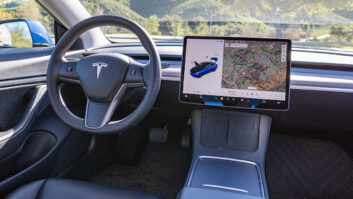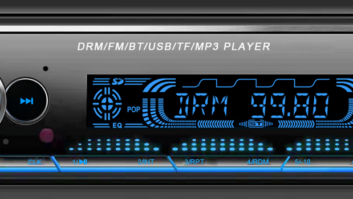
Christian Vogg is the head
of radio for the European Broadcasting Union.
GENEVA — The rollout of digital radio in Europe currently offers an exciting panorama, with countries like Denmark, Norway, Switzerland and the United Kingdom leading its development.
These nations adopted digital terrestrial broadcasting many years ago and they are now seeing the results, with Norway planning to be the first country to switch off FM in 2017. Norway is considered a role model for other European countries regarding which criteria to choose when deciding to turn off the FM band as well as how to proceed with marketing and other initiatives, although we know the situation differs from country to country.

David Fernández Quijada is senior media analyst for the European Broadcasting Union.
COMPLEX SCENARIO
Digital radio embracers like Germany and the Netherlands follow on the list, as well as newcomers like France, Poland, Italy and the Czech Republic. Others will join the digital radio club soon with trials expected in Austria and Turkey.
Having drawn the digital radio map, we can say that the “digital radio in Europe” topic is a complex one and includes not only broadcasters but many industries, governments and, last but not least, the audience. The arguments are clear and most of them well known: terrestrial digital radio is not only reliable in terms of network stability and QoS but also up to 40 times more cost-efficient than broadband.
However, it is no longer sufficient to focus on purely the broadcasting strategies — broadband can add sophistication to broadcast radio, especially when it comes to personalized applications. We are confident that this combination of broadcast and broadband that we call “hybrid radio” will be the future of our medium, using the best parts of each technology in order to create more benefits for listeners and offer new business models for mobile network operators and advertisers. The bottom line is therefore that in a digitized ocean, radio cannot stay an analog island.
DAB Rollout in Europe. Click on the Image to Enlarge In order to support the implementation process of digital radio in as many European Broadcasting Union member countries as possible, we decided last year to compile a “manual,” which features a collection of best practices and experiences. After in-depth research in Norway, Switzerland and the U.K., the results were recently published in the EBU’s Digital Radio Toolkit. In this comprehensive report, we identified 30 key success factors on how to implement digital radio.
SUCCESSFUL DIGITIZATION
Not surprisingly, owing to different national realities in European countries, there is no one-size-fits-all solution. However, the experiences of the three most advanced countries in this process can guide and inspire the digitization strategy of other countries. There are five key areas:
• Coverage: Digital radio coverage must be at least the same as analog radio. Including major roads, the coverage planning will involve both the car industry and commuters. Importantly, availability of the coverage must be well coordinated with public communications to avoid frustrating experiences for early adopters.
• Content: The content proposition needs to be strong, with clear added value when comparing the digital and the analog portfolio of services. This can be achieved mainly with new radio channels and programs. For example, Norway’s NRK has driven listenership to digital platforms by moving successful analog shows to a digital-only station. In Switzerland, a whole AM network was moved to DAB+.
• Costs: The launch of digital radio has associated costs for broadcasters, mainly distribution costs and production costs for the new content. Digital transmission is cheaper than analog but benefits only arrive with the analog switch-off. Therefore the simulcast period should be as short as possible but as long as needed. For the production of new content, economies of scale are essential. These can be achieved by producing the same output for a larger distribution or by sharing the costs of production, for example by airing the same radio show with customized music for different stations.
• Collaboration: “Compete on content but cooperate on technology” is the shared vision between public and private broadcasters. This includes not only broadcasting but also IP platforms, such as the UK Radioplayer, an example of a common Internet player. Led by broadcasters, all the stakeholders must work together; common industry bodies such as Digital Radio Norge or Digital Radio UK have proven to be very helpful in coordinating efforts. The aim must be to find incentives for everybody, creating win-win situations.
• Communication: Public communication is essential in order to make the citizens aware of the new platform and its associated services. Another key tool is involvement of the related industries. The message must focus on the added value of digital radio (basically new, exclusive stations), be consistent and avoid confusion in the market. Finally, it is important to keep it simple: promote “digital radio” and not “DAB” or “DAB+” since it is easier to understand, and the term “digital” has positive connotations for most people.
This “five Cs” formula leads to a sixth one: commitment from all the stakeholders. This commitment clearly shows the goals and ambitions of the industry and sends the strongest possible signal, helping to generate momentum among listeners. For instance, ARD in Germany recently published its clear commitment to pursue the path to digital radio. Now we are lobbying for other big players to jump on the bandwagon.
Finally, we must be honest — there is still a long way to go. In Norway it took more than a decade to achieve the switch-off target, requiring great efforts in defining hard criteria and working to reach them. And there is still opposition in some parts of Europe, mainly by mobile network operators and some commercial radio stations.
In both cases the reasons are related to cost and competition, but in our opinion this is a short-sighted view since moving to digital broadcasting offers long-term benefits, and competition is already coming from many platforms.
It is now up to us broadcasters to convince the nonbelievers of the advantages of digital terrestrial radio. We are optimistic that in the end, they too will get onboard and join us in rowing in the same direction — toward digital hybrid radio on all devices.
David Fernández Quijada is senior media analyst for the European Broadcasting Union. Christian Vogg is head of radio at the European Broadcasting Union.
Radio World welcomes other points of view. Please send comments to [email protected].













